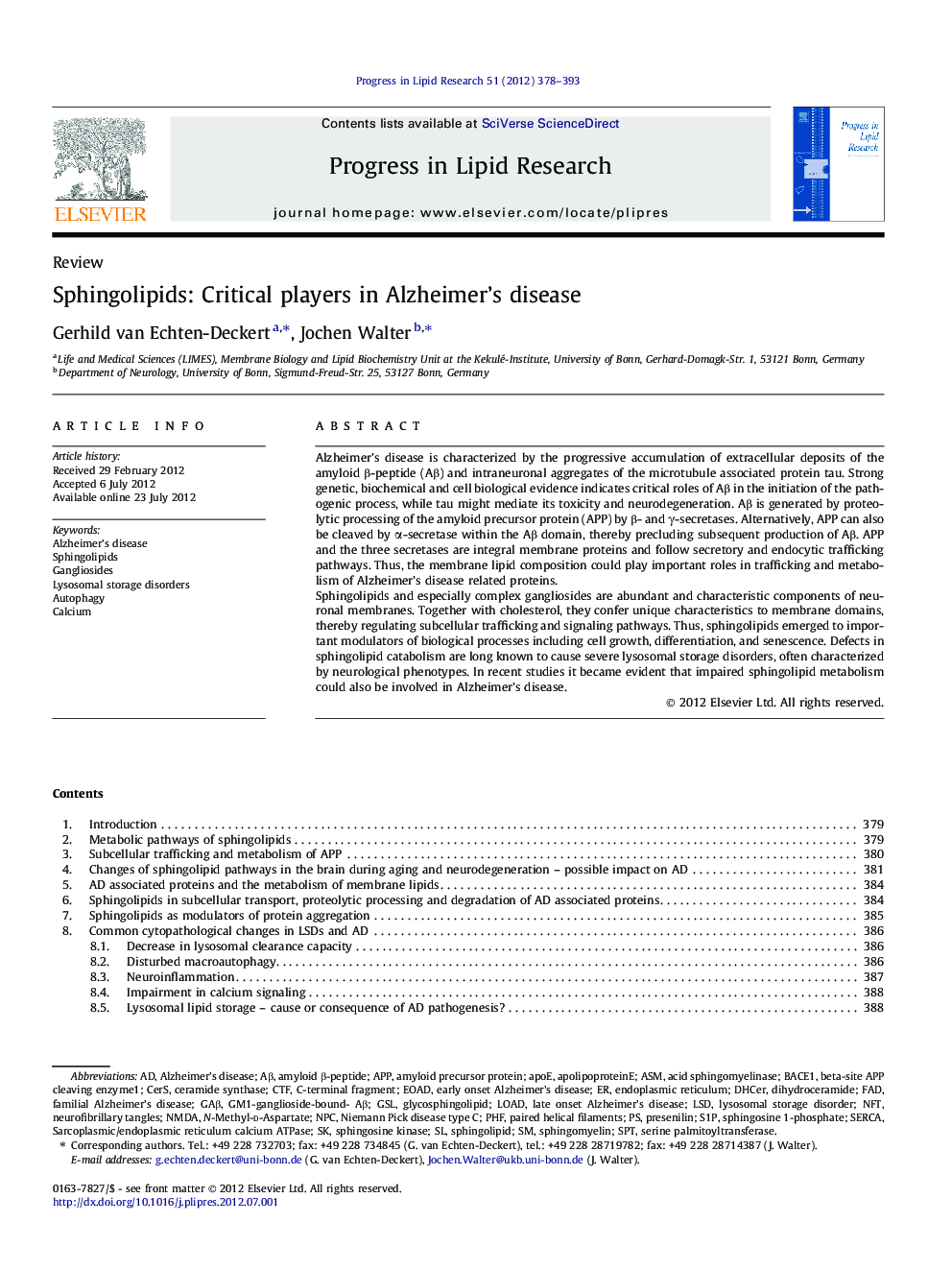| Article ID | Journal | Published Year | Pages | File Type |
|---|---|---|---|---|
| 2019151 | Progress in Lipid Research | 2012 | 16 Pages |
Alzheimer’s disease is characterized by the progressive accumulation of extracellular deposits of the amyloid β-peptide (Aβ) and intraneuronal aggregates of the microtubule associated protein tau. Strong genetic, biochemical and cell biological evidence indicates critical roles of Aβ in the initiation of the pathogenic process, while tau might mediate its toxicity and neurodegeneration. Aβ is generated by proteolytic processing of the amyloid precursor protein (APP) by β- and γ-secretases. Alternatively, APP can also be cleaved by α-secretase within the Aβ domain, thereby precluding subsequent production of Aβ. APP and the three secretases are integral membrane proteins and follow secretory and endocytic trafficking pathways. Thus, the membrane lipid composition could play important roles in trafficking and metabolism of Alzheimer’s disease related proteins. Sphingolipids and especially complex gangliosides are abundant and characteristic components of neuronal membranes. Together with cholesterol, they confer unique characteristics to membrane domains, thereby regulating subcellular trafficking and signaling pathways. Thus, sphingolipids emerged to important modulators of biological processes including cell growth, differentiation, and senescence. Defects in sphingolipid catabolism are long known to cause severe lysosomal storage disorders, often characterized by neurological phenotypes. In recent studies it became evident that impaired sphingolipid metabolism could also be involved in Alzheimer’s disease.
